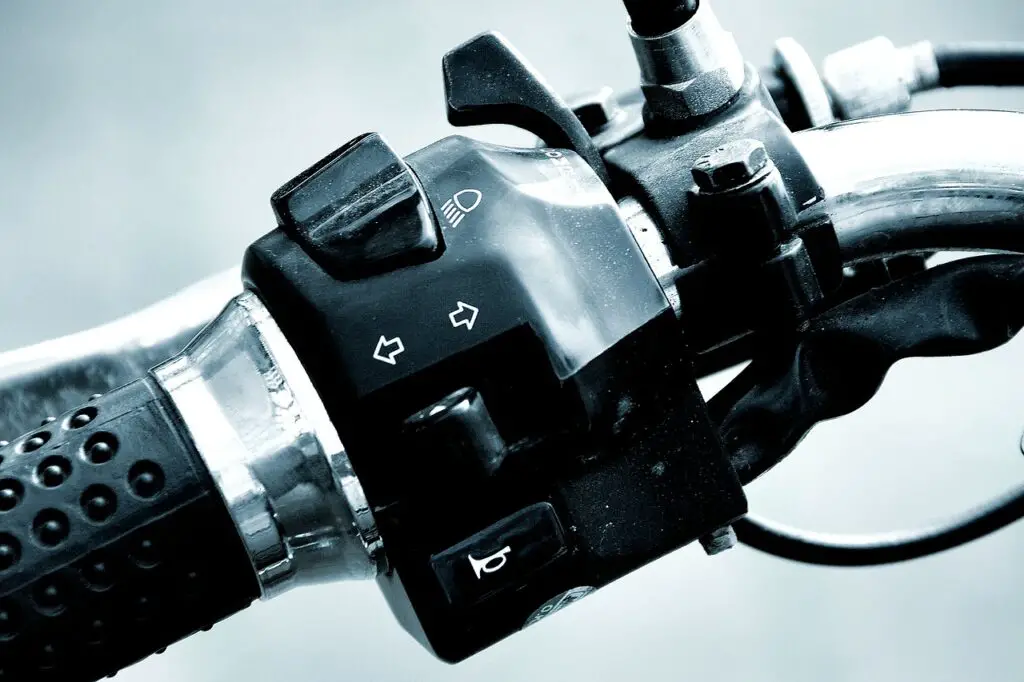There are so many elements to your motorcycle, and sometimes it can get confusing to know what does what. You may have noticed that your motorcycle has two throttle cables. What’s the difference? Is there a difference? Do you need both?
The two throttle cables do each have a different use. The pull cable pulls the throttle open, hence the name. The push cable, however, doesn’t actually push anything. It acts as a safeguard, pulling the throttle closed if the spring fails.
Now that you know the basics, let’s get into some more specifics on what these two cables do and why they’re important. Having a general idea of how all the parts of your motorcycle work will give you a safer, cheaper, more enjoyable experience through the years.

What’s the difference between push and pull throttle cables?
First, let’s start with a little run down of what the throttle cables actually do. The engine of your motorcycle needs air and fuel to run. When you turn the throttle, it connects to the pull cable and pulls open the butterfly valve. This allows air to enter the intake manifold.
As you open the valve, more air and fuel are able to get to the engine, increasing the power. When you aren’t turning the throttle, a spring keeps the valve closed, letting in just enough air for idle.
The pull cable is what does most of the work here. This is the cable that pulls open the valve when you turn the throttle. It allows air to get into your engine.
The push cable is a little more confusing, since cables can’t actually push. Though there are a few other names for these cables, push and pull is the most common. The word ‘push’ in this case is just used to show that it does the opposite of the ‘pull’ cable.
The push cable is a safety addition, though. Normally, there is a spring that will close the valve whenever the throttle isn’t activated.
However, if that spring fails, the push cable can act in its stead to safely close the valve.
The cables themselves are also different in more than just their purpose. Usually the push and pull cables are different lengths, and only the pull cable can be adjusted.
More importantly, the fittings for the push and pull cable are different. If you need to buy new cables, make sure to buy two different cables instead of two of the same kind, since they aren’t interchangeable.
So, in short, push and pull cables are not the same. The cables are different lengths and with different fittings. The pull cable pulls open the valve to let air into the intake manifold and the push cable closes the valve if the spring fails.
Should you remove the push throttle cable from your motorcycle?
Because the push cable is “just an additional safety feature,” some riders have suggested going without. Let me explain why that’s a bad idea.
To start off, removing the push cable from your motorcycle is illegal in most places. Before you even consider running with just one cable, do some research to find the laws in your community.
The only time it is reasonable to be running on one cable is if one breaks and you need to get home. If your pull throttle cable snaps, you can replace it with the push cable for a temporary fix. This single cable setup should get you home where you can safely replace both cables.
A bike will run fine with only one cable. Just because you hop on a bike without the push cable and can’t feel a difference doesn’t mean there isn’t a risk involved.
Some riders will insist that their bike runs more smoothly with the push cable removed. If this is the case, chances are your cables were installed incorrectly, and you should take a careful look to make sure each cable is properly attached and in good condition.
The fact is, the push cable is on your bike for a reason. Adding a push cable is a huge safety improvement, since it gives you another option if the throttle spring should fail for any reason. Additionally, even if the spring holds up, you’ll also want that push cable on hand in case the pull cable breaks and needs replacing.
Basically, there is no reason to remove the push cable, since it does have a purpose. If you value safety as you ride, leave both cables be!
How to adjust the throttle cables?
You may have noticed that your pull throttle cable seems to stretch over time. Don’t worry, this is normal and you can adjust the cables a few times before they need to be replaced.
There’s some debate as to how much freeplay is needed on a throttle cable. Some sources recommend as low as 2mm, while others go up to 10mm. Your service manual should have information specific to your motorcycle. If you aren’t sure and can’t find the information, it’s worth checking with a mechanic.
To check the amount of freeplay in your cable, roll the throttle forward as far as it goes and then open it carefully until you feel tension. The distance between when it’s closed and when you hit tension is the freeplay.
Depending on what is considered the right amount of freeplay for your motorcycle, you may find that you need to adjust your cables to tighten them a little more.
In order to do this, you’ll need to loosen the locknut and turn the barrel adjuster until you reach the right measurement of freeplay.
Learning to work on your motorcycle can feel like a lot of work at first, but it’s definitely worth knowing how to check your cables, adjust them, and replace them.
How long do throttle cables last?
As with any motorcycle part, eventually your throttle cables will need to be replaced, no matter how well you’ve taken care of them. In general, it’s recommended that you replace your throttle cables after three years or 10,000 miles; whichever comes first.
When you replace your cable, it’s a good idea to replace both the pull and push throttle cables, even if the push cable hasn’t really been used in the same way as the pull cable. However, replacing them both will give you fresh, matching cables that are clean and reliable.
Many riders report going years without ever changing the cables. However, you can also find plenty of stories of cables snapping after five or six years. It’s definitely better to avoid being in this situation!
Of course, there are some ways that you can increase the lifespan of your cables and make sure they are always in their best condition. The first is to check what kind of cable you have. Some require occasional lubrication (about once a year), while others are secured in a teflon tube that does not need additional lube.
Aside from that, the best way to take care of your throttle cables is to clean them after especially dirty or wet rides and inspect them often. If you make a habit of checking all the pieces of your bike for signs of wear and tear or damage, you’ll be much less likely to find yourself in an unfortunate situation on the side of the road.
When it comes to inspecting cables, you’re looking for fraying as a major sign that the cable needs replaced. Most fraying will happen at the end of the cable, so check the ends of your throttle cables as often as you think of it.
You also want to make sure that the throttle tube rotates smoothly. If it doesn’t though, that doesn’t automatically mean something is wrong.
A gritty, tough, or sticky throttle tube could just be dirty. You can remove the throttle tube and carefully clean it in order to remove grime. Often, this is enough to return it to smooth running.
The more time you spend maintaining your cables, the less often you’ll need to replace them.
Replacing throttle cables on a motorcycle
In the section above we talked about the fact that cables don’t last forever. Even with the proper maintenance, your throttle cables will eventually need to be replaced.
There are actually a few times when you might need to replace your throttle cables.
- After three years
- After 10,000 miles
- If a cable breaks
- If a cable is frayed
- If you change your handlebar and need cables that are a different length
If you aren’t sure what length of cable you’ll need because you replaced your handlebars, it’s always better to err on the side of too long. Cables that are too long can be tightened, but cables that are too short can’t be stretched to the right length.
Remember, when you decide to replace your throttle cables, you should replace both the push and pull cables at the same time. Also remember that they are different. Don’t just buy two pull cables and call it a day; buy a push and a pull cable and replace them both at the same time.
Now, replacing the throttle cables can feel like a tricky process because you need to get the routing exactly the same.
However, it’s definitely worth learning to do it on your own rather than taking the bike to a mechanic. There is always the chance that your pull cable could break while you’re on the road, and you want to know how to switch it out for the push cable to get home safely.
Before you do anything, take pictures of the original cables. This is the best way to make sure that you follow the original path exactly as you install the new cables. You may also want to jot down some notes if you think that will help.
It’s important to follow the same routing for several reasons. Even if you think the cables should work even in a different route, you probably aren’t accounting for all the pinch points and hot spots to avoid.
So, work slowly, carefully routing the new throttle cable the same way the original was routed.
Once you’ve finished, you should turn on the motorcycle and swing the steering from lock to lock. If you routed the cables wrong or didn’t leave enough freeplay, the idle will rise, and you’ll have to go back and adjust the cables.
Once the cables are adjusted, you can decide if you need to lubricate. Not all cables need to be lubricated, and some are up to you. If you live in a dry, dusty place, you probably will opt not to lubricate. The lubrication can gunk up the cables and attract dirt.
However, if you live somewhere wet, lubrication is an important element in preventing corrosion and keeping the throttle cables in good condition.
